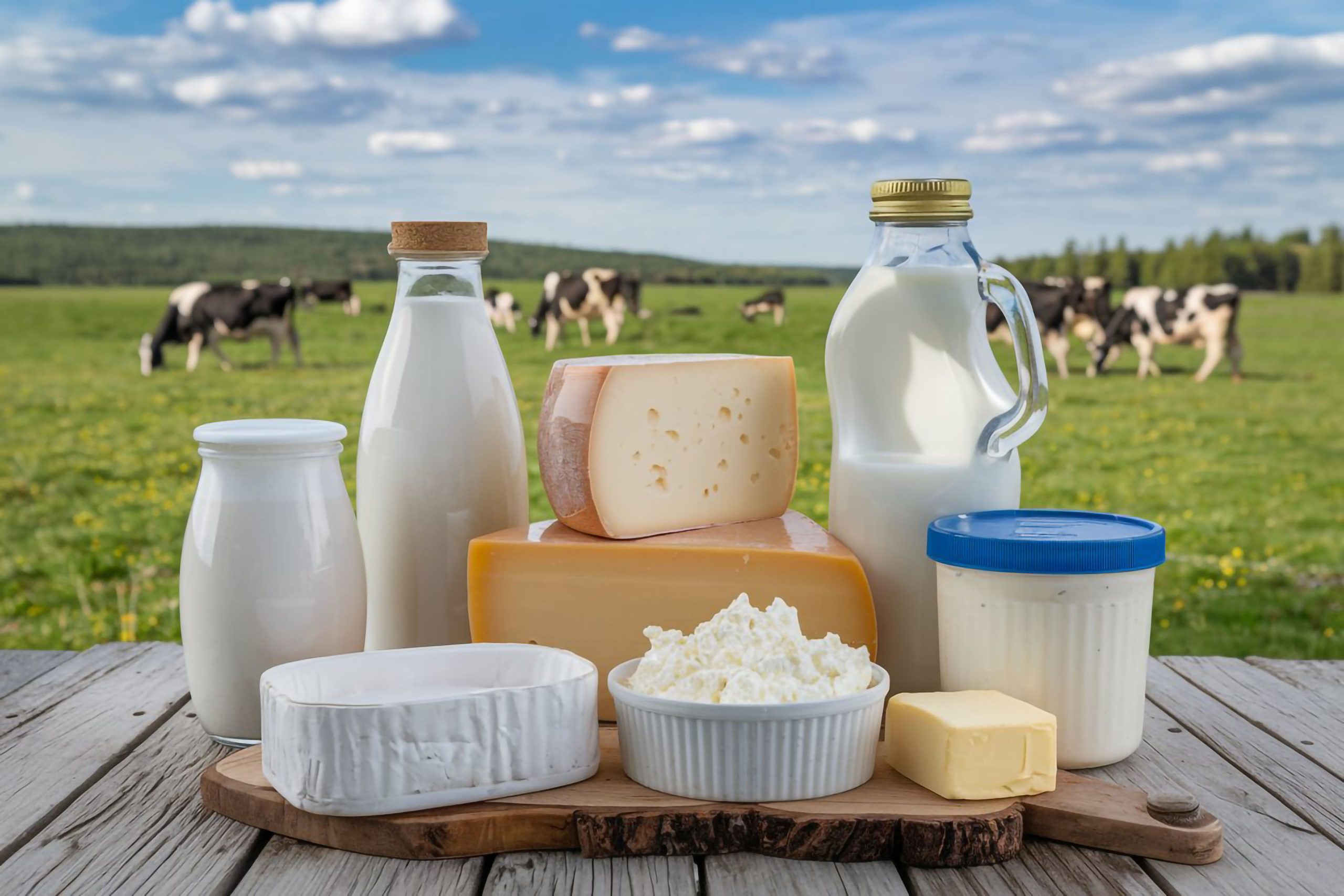The KSA dairy products market is experiencing rapid growth, with changing consumer preferences, strategic investments, and government regulations. The market is currently valued at approximately USD 6 billion as of 2025. The dairy product market is dominated by milk segment, with milk consumption exceeding 100 liters per person annually. The retail landscape for dairy products is evolving, with supermarkets and hypermarkets accounting for 60% of the off-trade value in 2024. The market is also witnessing strategic investments from leading industry players. Moreover, government initiatives focusing on local dairy production and investment in agribusiness is further accelerating the dairy products market in KSA.
What’s Driving Dairy Products Market in KSA?
- The country is witnessing rising per capita dairy consumption rates with approximately 70.19 liters of milk per year as of 2024. This growth is driven by cultural preferences and increasing health awareness. The dairy products like laban are stable in Saudi diet and are most demanded by the people. Moreover, growing awareness of protein, calcium, and probiotics rich food is driving the demand for fortified milk, low-fat yogurt, and high-protein dairy drinks.
- The growing urbanisation is transforming consumer preferences. The consumers are demanding convenient and high-quality dairy products including value-added dairy products like flavored milk, single-serve cheese portions, and probiotic yogurt. Furthermore, consumers now prefer online platforms to access wide variety of dairy products. In 2024, online sales accounting for 35% of the total dairy product sales.
- The milk powder market in KSA is witnessing rapid growth, driven by rising demand for infant formula and shelf-stable dairy products. The rising birth rate with over 17.4 births per 1,000 people is driving the infant formula consumption. Moreover, growing awareness about nutritional benefits of milk powder is further accelerating dairy product market.
Market Competition
The KSA dairy product market is moderately consolidated with mix of domestic and international players. The key players including Almarai, SADAFCO, and NADEC dominates the landscape. Almarai is a leading player in Saudi dairy sector and has vertically integrated operations. The company has announced a capital expenditure plan of USD 2.8 billion over the next five years which is aimed at enhancing production capacities and expanding its footprint across the Middle East. SADAFCO is strengthening its position within long-life milk, tomato paste, and ice cream segments. In 2024, company reported total sales of USD 789.43 million. Meanwhile, National Agricultural Development Company (NADEC) has partnered with SAP Signavio to transform its operations digitally. In 2024, NADEC completed the operation of a 30 MW solar energy project in Haradh, showcasing its commitment to renewable energy sources.
Water Scarcity Constraint on Dairy Production
The KSA dairy product market is witnessing a major challenge of water scarcity due to its climate and limited freshwater resources. This hinders the agricultural and dairy product market of the country. This water scarcity limits cultivation of feed crops, leading to import and increasing production costs. The dependency on desalinated water creates operational expenses as high energy is required for desalination processes. The businesses entering the dairy product market should create necessary strategies to limit the impact of such challenges.
Future Outlook
The KSA dairy product market is set to undergo significant transformations through 2030. The integration of advance technologies like precision farming, automation, and sustainable packaging will revolutionise dairy farming practices in upcoming years. The shifting consumer preferences for health-oriented and speciality dairy products will drive the market. Businesses will focus on healthy products including organic and hormone-free products, lactose-free and plant-based alternatives. The expansion of online platforms will accelerate the demand by providing wide variety of products and convenience to consumers. Moreover, government’s initiatives will drive investment in local production and research and development for dairy products market in KSA.
Consultant at Nexdigm In their latest publication “KSA Dairy Products Market Outlook to 2030: By Product Type (Milk, Cheese, Yogurt, Butter, Cream, Ice Cream, Milk Powder, Whey Protein, Curd, Paneer), By Distribution Channel (Supermarkets & Hypermarkets, Convenience Stores, Online Retail, Specialist Retailers, Others), and By Region (Northern and Central Region, Western Region, Eastern Region, Southern Region)” believe that by adopting precision dairy farming for water efficiency and leveraging e-commerce for direct-to-consumer sales, businesses can gain competitive edge in KSA dairy product market.

